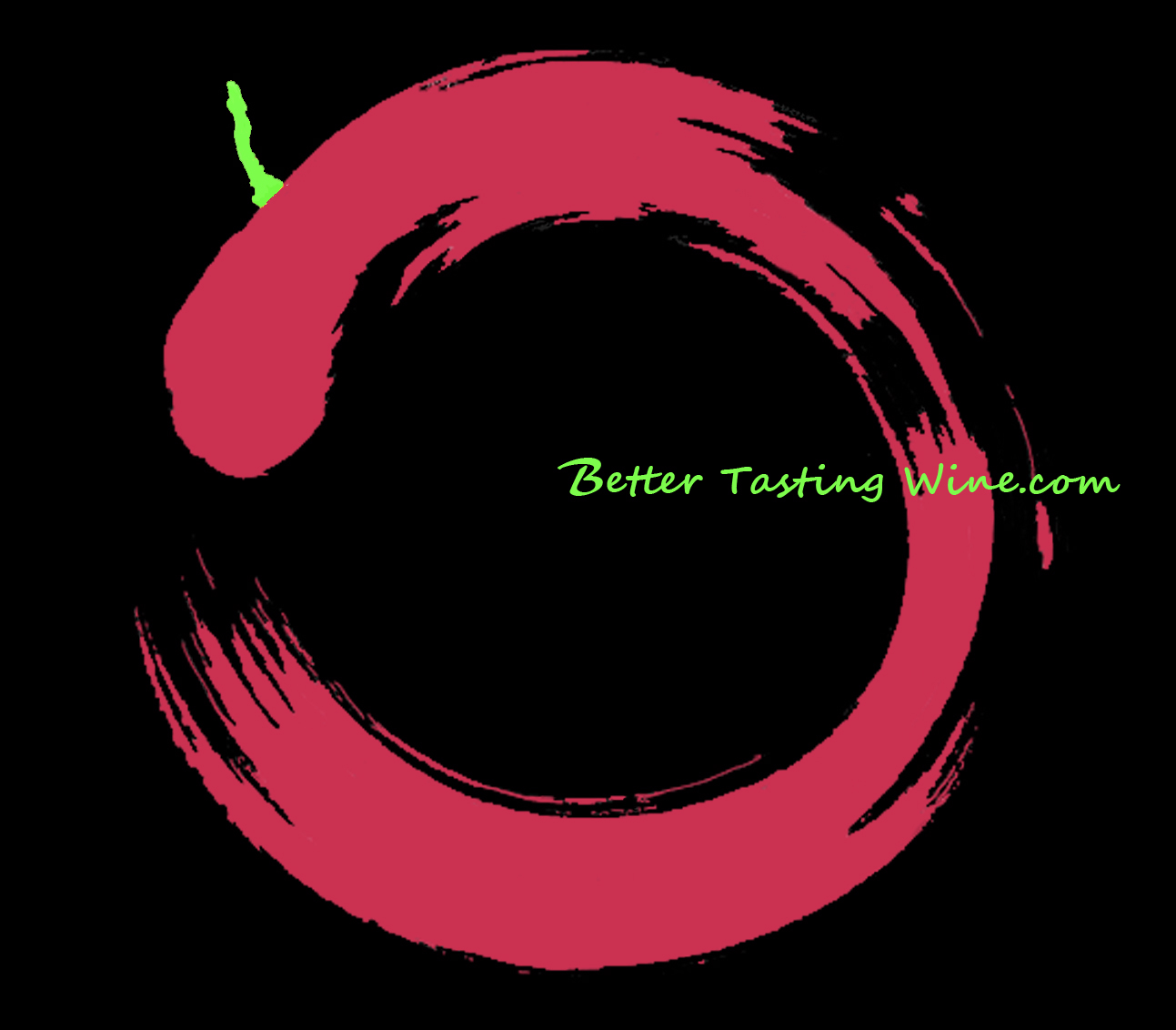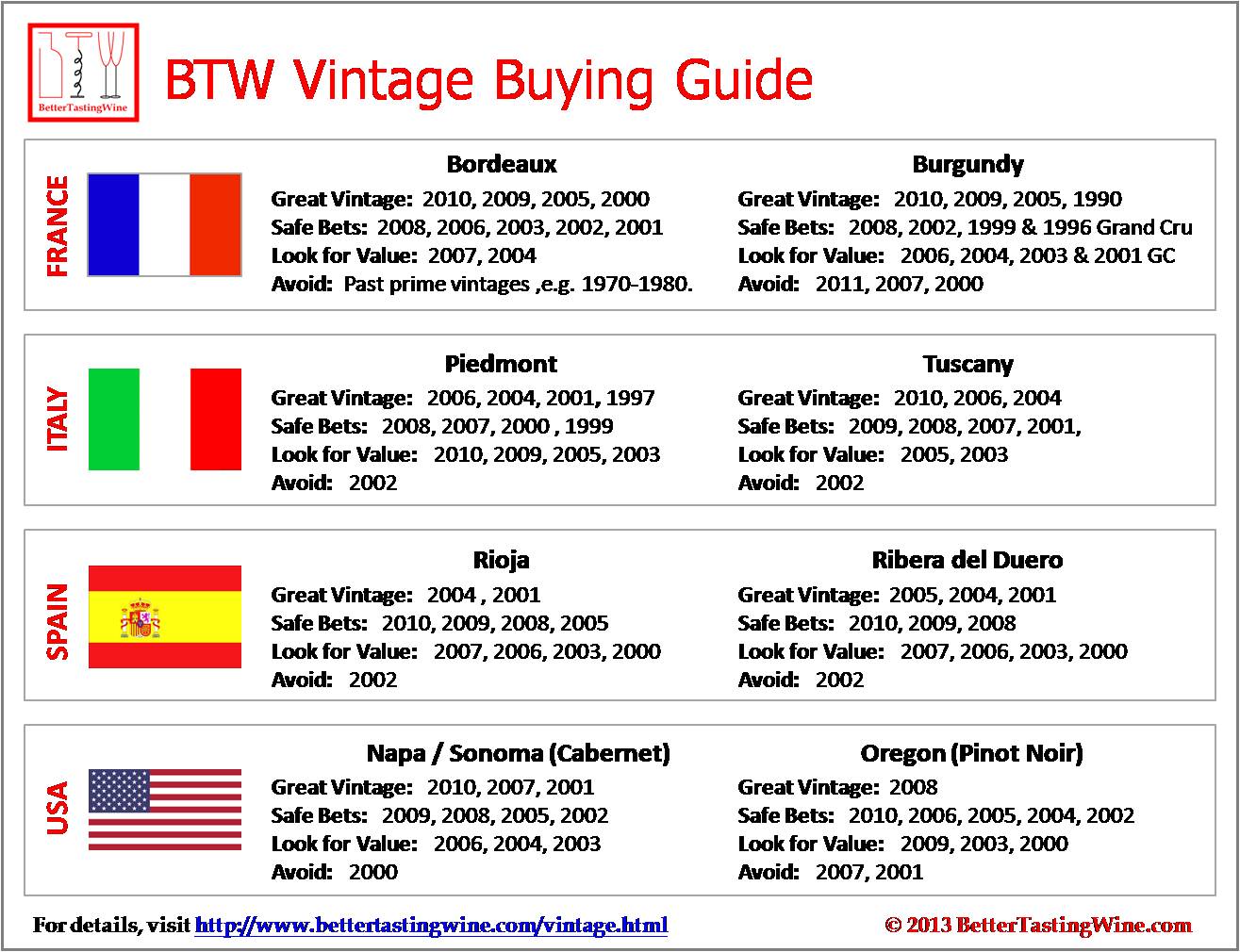Vintage Guide: Good, Safe, vs. Bad Bets
|
|
When buying wine, it is critical to check the vintage -- the year of harvest labelled on the bottle. As climate differs each year, each vintage would have a different grape growing condition (i.e. expected quality and value).
A good vintage commands higher priceWait, you may say -- the price for your everyday Sauvignon Blanc has not changed much from last year. For wines with mass quantity, ex-cellar pricing will not change much each year. The change in the retail price is more affected by the business factors such as real estate pricing or foreign currency exchange rate. For wines with limited quantity produced in regions where climate fluctuates annually, such as Bordeaux Grand Cru classé or a Burgundy Grand Cru, pricing for different vintages would differ widely. For instance, the price of Lafite 2005 doubles that of Lafite 2004. For illustration, refer to retail price of lafite by vintage. Vintage is region and grape specificClimate and vintage are region specific. For example, 2005 is an excellent vintage for Bordeaux reds, but only an average vintage for Champagne and Alsace. On contrast, 2004 is a poor vintage for Bordeaux but a great vintage for Italian Barolo. Also, it is good to note that different grapes require different growing factors. A good year for red could be a bad year for white in the same region. Be a smart buyer, know your vintageA great vintage would cost a lot of money. A poor vintage would disappoint. How do you balance quality and price? Our vintage wine buying guide breaks fine wine producing regions into 4 categories: i) Great Vintage: A vintage with perfect grape growing condition. Fine wine will command high prices, go for a second-wine or a second-tiered producer. The odds are in your favor, chances are these wines would be delicous at half the price tags. ii) Safe Buy: A good year, often over-shadowed by a great year before or after them. These are the safe buys. iii) Look for Value: An average year or what we call a "producer's year". Grapes may not be perfect, but an experienced master may work magic. Look for quality producers in an average year to save money while getting quality. iv) Avoid: A poor year with hostile grape growing condition. Probability is most wines would suffer on some dimensions (lacking fruit, acid, or tannin). Best avoid to not waste money. Last but not least, vintage reveals maturity
There is a best enjoyment period for each type of wine. Most everyday wines are best enjoyed within 3 years of harvest. When selecting a New Zealand Sauvignon Blanc, buy the youngest (most recent) vintage. It will give the best enjoyment, with ample fresh fruits and vivacity. Unless a wine is known for its ageability, be cautious when buying a wine that is mature or approaching "past prime". For more information, visit maturity chart of different grapes. Time to do some smart shopping and apply your vintage knowledge! |
Stay informed. Follow us and subscribe here to get our latest wine insider news and tips:
Practical Wine Lessons: Wine Tasting Like a Pro | Grapes | Serving Wine | Food Pairing | Preservation | Temperature | Restaurant Ordering | Wine Labels | Wine Regions | Wine Storage | Start a Collection | Common Wine Myths.
Useful Wine Tips: Ten Facts to Become an Instant Wine Pro | Vintage Guide | Removing a Broken Cork | Serving Order of Wines | Fastest Way to Chill a Wine | Host Wine Party | Elements of a Good Wine | Wine Investment "Winning" Guide | Leftover Wine: Recipe for Vino Punch | Freeze Your Leftover Wine | Wine Moods Pairing | Best Way to Preserve Champagne After Open | Ten Must-Have Wine Accessories.
Tasting Tutorial: Cabernet vs. Merlot vs. Pinot Noir | Sauvignon Blanc vs. Chardonnay vs. Riesling | Burgundy vs US vs New Zealand Pinot Noir.
Fun Download: Wine Tasting Scorecard | Wine Serving Temperature Chart | Wine Aroma Table | 3 Must-Know Red Grapes | 3 Must-Know White Grapes | Vintage Chart | Wine Party Themes | Wine Region Maps | Grand Cru Chart | Wine and Moods Pairing Chart | Wine Quotes & Wine Humor.
Travel & Exploration: Champagne 101 | Bandol | Italy | Spain | Sherry.
Jewels & Gems: Grower Champagne Pierre Gimonnet | Gravner Ribolla - An Amber Wine Maturated in Clay | Gaja - King of Barbaresco.

